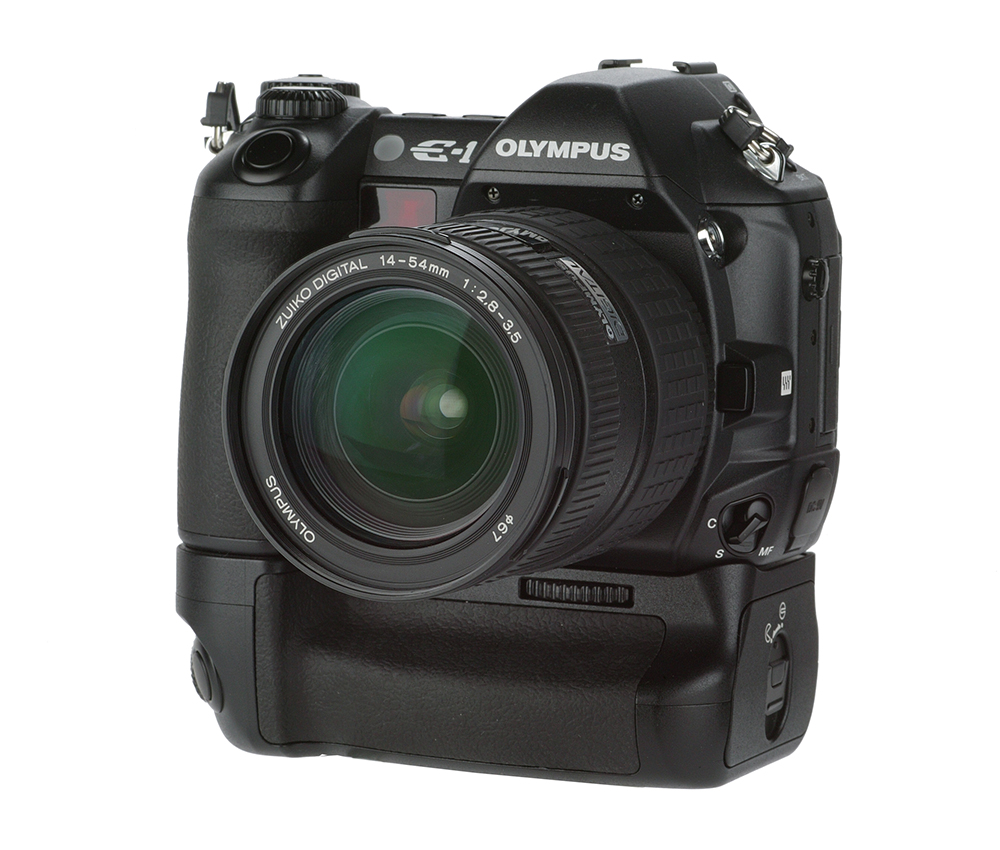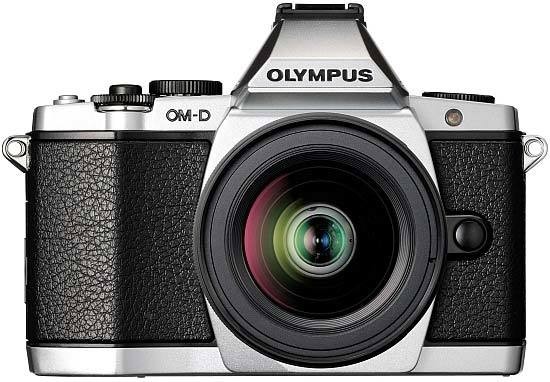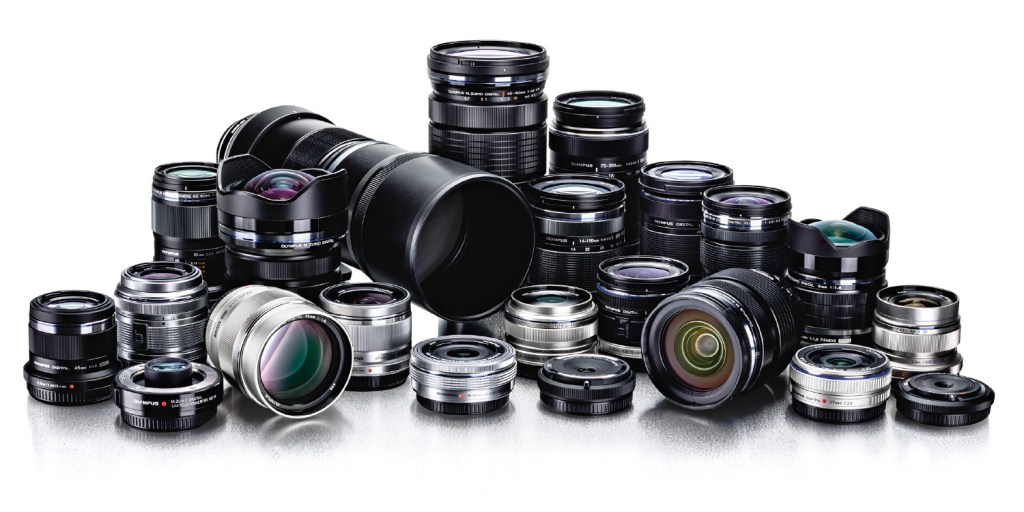Last October 2019 we celebrated the centenary of Olympus with a special issue of AP looking back at its photographic highlights. Less than a year later the parent company announced that it is selling off its camera division to investors, Japan Industrial Partners Inc (JIP) after three years of huge losses and no apparent idea of how to turn things around, saying that the digital camera market is ‘extremely severe’ and ‘no longer profitable’. How did it come to this? What went wrong? Clearly a lot of things went wrong. Some of them are not Olympus’s fault – the rise of smartphones, for example – but others definitely are.
Since its heyday in the 1970s, when its beautiful OM system cameras were advertised on TV by the likes of David Bailey and Lord Lichfield, the company has had more than its fair share of face palm moments. Its response to the introduction of autofocus SLRs was the OM707 – possibly the worst SLR ever made. On the other hand its XA and mju series of compacts were among the best. I had several over the years.

The Olympus OM series of 35mm SLRs were beloved by many during the 1970s and still have a cult following today. Photo John Wade
When the dawn of the 21st century brought the digital revolution, Olympus was right at the front, holding the flag. Its compacts were innovative in a good way, and many were class-leading. But the company was at a disadvantage when it came to DSLRs, because it had been many years since it had produced a decent 35mm SLR to base one upon. So it had to develop, from scratch, a completely new interchangeable lens system, with a new sensor, mount, and lens range. This was the first system designed entirely for the digital era, and optimised for the way that sensors work, rather than re-hashing bits from old 35mm cameras.
It was a new format for a new century, and Olympus’s executives could have called it anything they wanted – so they decided to name it after an obsolete 1950s television technology. The name Four Thirds makes no sense to anyone, and every time I hear it a part of me still gets a bit angry at the sheer stupidity of it. My therapist tells me I should let it go but I just can’t. Not until the person responsible is condemned to be put into the stocks and have rotten fruit thrown at them until the end of time.
But the madness didn’t end there. Four Thirds was based upon a sensor a quarter the size of 35mm film and this enabled Olympus to produce smaller, lighter cameras – a fact emphasised repeatedly at its launch, and why not? Small and light is a good thing. So what did the firm decide to launch as its first camera? Something small and light, perhaps? Something affordable, to tempt the consumer away from their legacy brand? No.
The Four Thirds debut model, the E-1, was a chunky pro DSLR – presumably because someone at Olympus thought that all those professional press and sports shooters around the world were just dying to risk their livelihoods by trading in their pro Canon and Nikon kit for an untested new system with a small sensor and hardly any lenses.

The Four Thirds system, with its smaller sensor enabled the creation of smaller, lighter cameras. Like the… er… E-1.
The E-1 was not a bad camera but hardly represented what Four Thirds was supposed to be about, and Olympus followed it with the chunky, clunky and frankly weird E300. It took the company four years to remember the entire point of the smaller sensor, with the suitably diminutive and appealing E400, but by then it was probably already working with Panasonic on the new technology that would shortly render it obsolete (and ultimately every other DSLR).
The mirrorless era was launched at Photokina 2008, with the Panasonic Lumix G1, centred around Olympus’s Four Thirds sensor but ditching the SLR mirror assembly to make it a lot smaller. Here was a second opportunity to drop the silly name but no, they called it ‘Micro Four Thirds’.

Olympus’s first mirrorless model, the PEN E-P1, was a beautiful camera but lacked a viewfinder – something that few serious enthusiasts would be without
It took Olympus nearly a year to reveal its own Micro Four Thirds debut, the Pen E-P1. This was the camera that introduced the concept of retro design to digital cameras, taking its inspiration from the company’s illustrious Pen cameras of the 1950s. I won’t deny that it was a thing of beauty, but £700 for a camera with no viewfinder? Really? I don’t believe that any serious photographer would pay serious money for a camera without a viewfinder, except as a novelty perhaps. (Yes, you could have spent another couple of hundred quid for an EVF to stick on the top but for that kind of cash it should have been included.)
What Olympus should have done, of course, is take its design cues from its most successful, most iconic, most universally loved range of cameras, its OM system of the 1970s, but again it would take the company another three years for the penny to drop. Finally, in 2012 the OM-D E-M5 was launched and it was magnificent – in my opinion one the most beautiful digital cameras ever made, up to that point, especially in its silver livery. (Some people preferred the black one but they were wrong). But again, the department for silly names stuck their oar in. Why the alphabet spaghetti? What was wrong with just calling it the OM-D5?

The Olympus OM-D E-M5, launched in 2012, was inspired by the OM series of SLRs from the 1970s and was a huge (and deserved) success.
Olympus may have discovered the demand for 1970s inspired cameras, but it was Fujifilm who picked up that ball and ran with it. The OM-D series offered classic 35mm looks, but not the user experience. Fujifilm took one look at the OM-D and finished the job that Olympus started. The X-T1 added a proper shutter speed dial, an aperture ring on its lenses, and film simulation modes. This was retro done properly. It may have been a bit bigger than the E-M5 but crucially, for many users, it also had a bigger sensor.
While all this was happening the smartphone industry was quietly stealing the camera industry’s lunch. Everyone already had a camera on their phone and that camera was getting better and better with every generation. When Olympus and Panasonic conceived the mirrorless system in 2008 the target audience was the mass-market consumer who wanted to upgrade from their smartphone or point-and-shoot compact to a decent interchangeable lens camera, but didn’t want one of those big, heavy and complicated DSLRs that the camera nerds used. (Nikon also targeted this sector in 2011 with its ill-conceived and ultimately doomed 1 system, which used an even smaller one-inch sensor.)
But over time, more and more people decided that their phone camera was good enough, so this audience was disappearing rapidly. Meanwhile Sony gambled that those camera nerds would also benefit from mirrorless technology but with full-frame sensors that offered higher resolution, greater dynamic range and the ability to create super-shallow depth of field. The runaway success of Sony’s mirrorless Alpha 7 system took even Canon and Nikon by surprise, and left everyone frantically trying to catch up and introduce their own full-frame systems.
Only Olympus and Fujifilm have resisted the full-frame charge, although Fujifilm has leap-frogged it and launched into digital medium format, where it is enjoying great success – no doubt drawing upon its experience making medium format film cameras back in the day. Meanwhile Fujifilm’s APS-C based X system offers, for many, a better compromise between size/weight and image quality than Micro Four Thirds does. Its cameras and lenses are bigger than the Olympus equivalents, but not significantly, and are much closer to full frame in image quality.
Meanwhile Olympus’s Micro Four Thirds partner in crime, Panasonic, had the foresight (and to be fair, the heritage) to make big inroads into the rapidly growing pro video market where, like Canon and Sony, it has found deserved success. It also has a (slightly shaky) foot in the full-frame camp as part of the new L-Mount Alliance. Olympus is alone in being 100% dependent upon the smallest current mirrorless camera format, in a world that has rightly or wrongly decided that full-frame is better.
That isn’t necessarily true for everyone – for wildlife photographers and others who need long lenses, for example, the opposite is clearly the case. But perception is more powerful than fact, and it is certainly true that larger sensors tend to offer higher resolution and wider dynamic range. It’s also a lot easier to produce a shallow depth of field.

The Olympus Micro Four Thirds lens range
Ultimately Olympus’s past mistakes are interesting for context but they don’t much matter right now. Sony had barely any market share at all five years ago and now look at them. It’s the current range that counts and the fact remains that the OM-D range is a lovely system, with beautiful looking cameras brimming with innovation (its image stabilisation system is almost supernatural in its shake-stopping abilities and far better than anyone else’s) and some fantastic lenses. The trend among serious enthusiasts may be towards larger sensors, but I refuse to believe that there isn’t a sufficient market across the world for a small, high quality interchangeable lens camera system capable of pro quality A3 prints, with prime lenses so tiny that you can fit two or three in a blazer pocket (I’ve done it many times).
Camera sales may be in decline, but that’s because the industry is returning to the pre-digital era where cameras were sold primarily to passionate enthusiasts, before they became a mass-market commodity that everyone had to own. And the days of everyone upgrading every year to something much better are over, because cameras are now as good as they need to be. But photography as a hobby has never been more popular, thanks largely to the fact that smartphones are a gateway drug to proper cameras. Millions of those phone snappers get bitten by the bug every year and, frustrated by the limitations of their device, there will always be a percentage of them who are inspired enough to invest in something more serious.
Many will choose to make the biggest possible leap in sensor size and quality from what they already have in their phone and will go for full frame, others will choose one of the increasing number of vlogging cameras, but there will be many more for whom the Micro Four Thirds sensor makes the most sense. Olympus should be able to sustain a profitable business from its camera system if it was properly run.
But here, perhaps, we come to the nub of the problem. Its often-bizarre product-line decisions were just the visible tip of an iceberg of corporate mismanagement that hit the world’s headlines in 2011 with a major financial scandal in which eye-watering losses of over £1 billion were revealed. Add to this the fact that the camera division is only a small part of a much larger business for which the main focus is the lucrative medical equipment sector, and you can see how things might have gone wrong.
With any luck the new owners of the Olympus brand will be blessed with much better management. It will clearly need to slash costs but hopefully not in its R&D department, where it has a talented team who have introduced some great innovations over the years, from live view, to dust reduction to a hand in the mirrorless camera itself.
The important thing to emphasise here is that the new owner clearly sees a future for the brand, and I see nothing in this announcement to stop you from buying into the Olympus system, if you were planning to, or to jump ship if you’re already an Olympus user. It would be tragic if Olympus were to go the way of Pentax, a brand with a once proud heritage that now exists in name only and is more associated with spectacles than cameras.
Find the best Olympus cameras, or have a look at the best Micro Four Thirds lenses.








